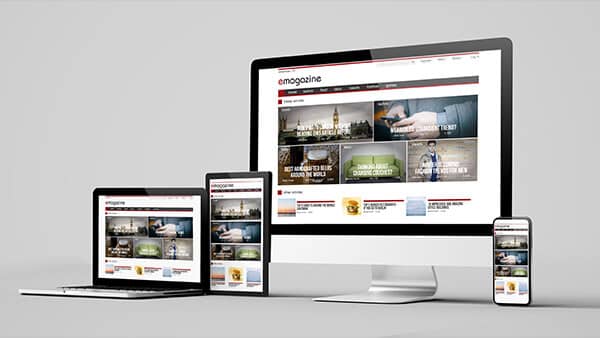User Experience (UX) design helps breach the gap between a user’s needs and a company’s products and services offering. In web design, it focuses on creating a website that is user-friendly, intuitive, and enjoyable to use. According to Forbes, “88% of users will not return to a site after a bad experience”. Here are 9 ways UX design can enhance web design:
1. User Research
User Research, a combination of real data and some speculation, helps understand the target audience, their needs, preferences and behaviour patterns, motivation goals and pain points. This research informs the design process, ensuring that the website meets the users’ expectations. Prioritizes users’ needs and goals throughout the design process. User personas and scenarios guide design decisions and ensure that the website caters to the intended audience. Of course, the goal is to tailor the product and service solutions to the target audience and navigate the user to the product and services.
2. Information Architecture (IA)
IA is used to structure the content and layout of the website in a logical and organized manner. Good IA creates flow. It helps users easily find the information they seek, reducing frustration and improving overall usability. Read our article “Information Architecture – Building Blocks for Good UX”.
3. Wireframing and Prototyping
Wireframing and Prototyping help visualize the website’s layout and functionality. Most people misunderstand this crucial step of the process. It is intended to invite dialogue and collaboration to create an optimal solution. These early-stage designs allow for quick iterations and refinements based on user feedback. It also helps identify risks and resources early in the process.
4. User Testing
User Testing allows for the gathering of feedback from real users. This iterative process helps identify usability issues and allows for adjustments to be made before the website is launched.
5. Responsive Design
Responsive Design allows the website to adapt seamlessly to different screen sizes and devices keeping in-tact readability of text and relevancy of information to the form of delivery. This improves accessibility and user satisfaction, as users can access the site on smartphones, tablets, and desktops. As of 2023 over 50% to 60% of website traffic comes from mobile devices and when you think mobile think about mobility and the impact it has on the experience.

6. Web Accessibility
Web Accessibility (e.g., WCAG) makes the website inclusive for all users, including those with disabilities. This involves the use of proper font size, contrast, visual hierarchies, use of proper HTML markup, providing alternative text for images, complying with the minimum WCAG requirements for colour to ensure readability, and ensuring keyboard navigation.
7. Performance Optimization
Performance Optimization is often overlooked but should be a vital part of any service model. In web design, it is important for the website to load quickly and perform well. Slow-loading pages can frustrate users and lead to high bounce rates. According to Forbes:
- 47% of users won’t wait longer than two seconds for a website to load.
- 40% of users will leave a site if it takes more than three seconds to load.
- Website users spend an average of 5.59 seconds looking at written content on a site. https://www.forbes.com/advisor/business/software/website-statistics/
8. Clear Navigation
Clear Navigation and clear calls to action (CTAs) guide users through the website. According to Forbes, website users spend an average of 6.44 seconds focused on the main navigation menu. A well-structured navigation system makes it easy for users to explore content and improves the overall efficiency of the site. After all who wants to spend more time than needed?
9. Feedback and Error Handling
Feedback and Error Handling refers to mechanisms and error messages that inform users about their actions and help them recover from mistakes easily. There are many factors that can break a system. What is important is that there are mechanisms in place that inform the user on how to navigate from that and get the help which in turn will bill trust.
Furthermore, systems can also report bugs to site admins for early interventions. This way the situation can be contained. And the User Experience is not impacted unintentionally in a negative way.

UX design uses many different methods and methodologies to improve the quality of experience. UX design, if implemented correctly, ensures that when a user comes to the site, the user is engaged. UX designers can greatly enhance the effectiveness and usability of a website.





